America’s oldest buildings are more than just structures—they’re pieces of history that tell stories of early settlers, cultural shifts, and the growth of a nation. These buildings, some of which are centuries old, have weathered the changes of time, yet remain standing as testaments to the past. From colonial homes to early churches and forts, each one has its own unique role in shaping the American landscape.
The history behind these ancient structures often reveals surprising details about how life was lived long before modern conveniences took over. These buildings, though sometimes hidden away or in less-traveled areas, serve as a connection to the country’s early days. For anyone interested in the roots of American history, these buildings offer a rare glimpse into a time when life moved at a much slower pace.
Acoma Pueblo

Perched atop a 367-foot mesa in New Mexico, the Acoma Pueblo is a testament to ancient ingenuity. Known as “Sky City,” this settlement is considered one of the oldest continually inhabited communities in North America. Imagine the view from atop the mesa, with adobe structures clinging to the sandstone cliffs.
The Pueblo’s origins trace back over 1,000 years, and its people have preserved their ancestral way of life through centuries of change. Walking through the narrow, winding streets, one can almost hear the whispers of history carried by the desert winds.
Acoma remains a vibrant symbol of cultural preservation.
Taos Pueblo

Nestled in the shadow of the Sangre de Cristo Mountains, Taos Pueblo is a living testament to Native American history and culture. These iconic multi-story adobe buildings have been continuously inhabited for over 1,000 years.
The Pueblo’s architecture showcases traditional building techniques that have stood the test of time. Walking through its sun-drenched plazas, you’ll encounter a community deeply rooted in its cultural traditions.
Visitors are drawn to its timeless beauty and the opportunity to witness a way of life that thrives amid modernity. Taos Pueblo offers a unique glimpse into the enduring spirit of its people.
San Esteban Del Rey Mission
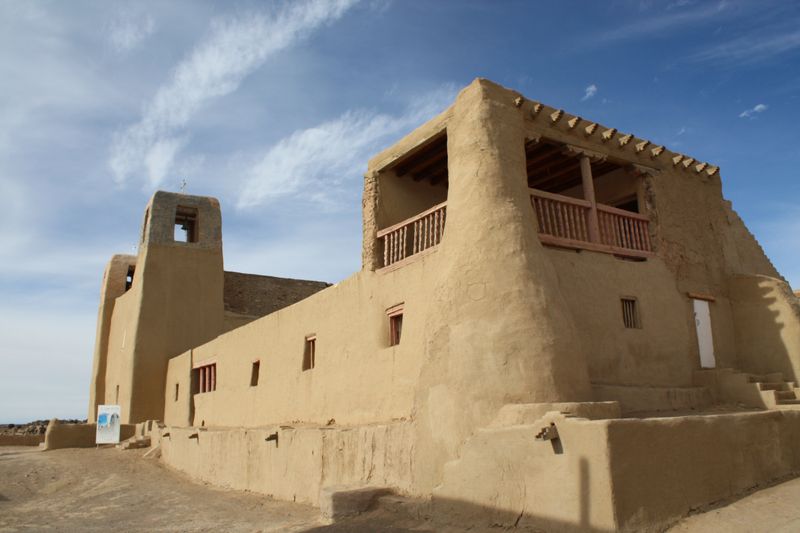
Constructed in 1629, the San Esteban Del Rey Mission is an architectural jewel located within Acoma Pueblo. This adobe church stands as a symbol of resilience and faith, with its thick walls and wooden beams.
The mission’s history is intertwined with the cultural evolution of the Pueblo people, serving as a site of both worship and cultural exchange. Inside, the cool, dimly lit interior offers a serene escape from the desert sun.
Visitors can explore the mission’s beautifully preserved art and artifacts, gaining a deeper understanding of its historical significance in this unique community.
Mission San Miguel Arcángel
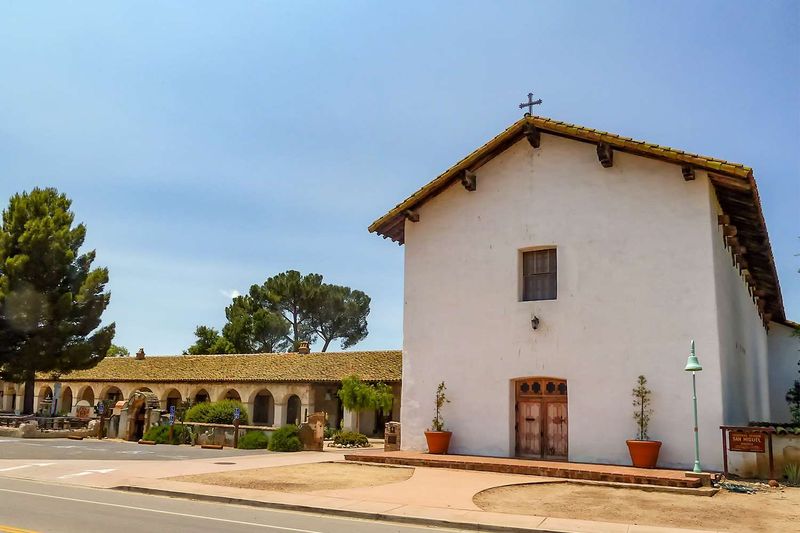
Founded in 1797, Mission San Miguel Arcángel stands as a serene relic of California’s Spanish mission era. Its adobe walls and red-tiled roof create a picturesque silhouette against the California sky.
Inside, visitors are welcomed by vibrant frescoes, painted by Native Salinan artists, that depict biblical scenes and local flora and fauna.
The mission’s tranquil gardens offer a peaceful retreat, with fragrant flowers and shady trees providing respite for weary travelers. Mission San Miguel Arcángel continues to be a place of spiritual reflection and historical wonder, drawing visitors from near and far.
Mission San Juan Capistrano
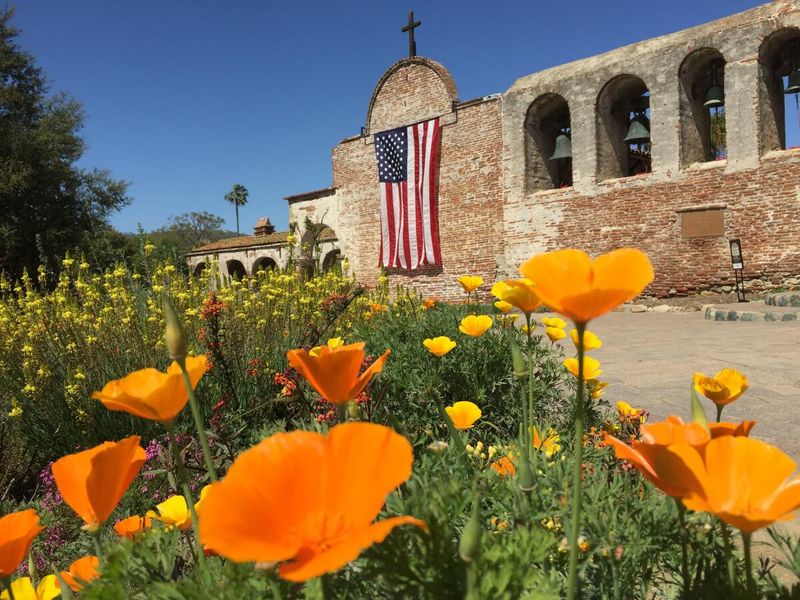
Famed for the annual return of the swallows, Mission San Juan Capistrano is a beloved historic landmark in California. Founded in 1776, its red-tiled roofs and crumbling ruins tell a story of resilience and renewal.
Visitors can explore the mission’s lush gardens, where vibrant flowers and tranquil fountains create a serene atmosphere. The Great Stone Church, though partially in ruins, stands as a poignant reminder of the past.
Whether witnessing the swallows’ arrival or strolling through the gardens, visitors are drawn to the mission’s timeless beauty and its enduring role in California’s history.
Jamestown Church
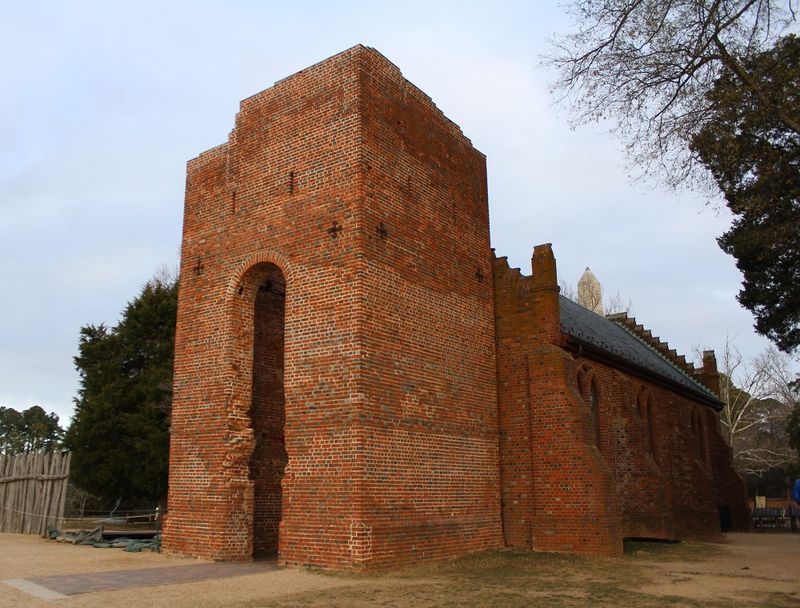
Nestled in the heart of Historic Jamestowne, the Jamestown Church stands as a symbol of early colonial history. Its brick tower rises against a backdrop of lush greenery, evoking a sense of timelessness.
Built in 1639, the church is a testament to the struggles and triumphs of America’s first permanent English settlement. Visitors can explore the church’s interior, where timeworn pews and plaques whisper stories of the past.
As you wander through the surrounding landscape, the echoes of history resonate, offering a glimpse into the lives of the settlers who once called Jamestown home.
Fairbanks House
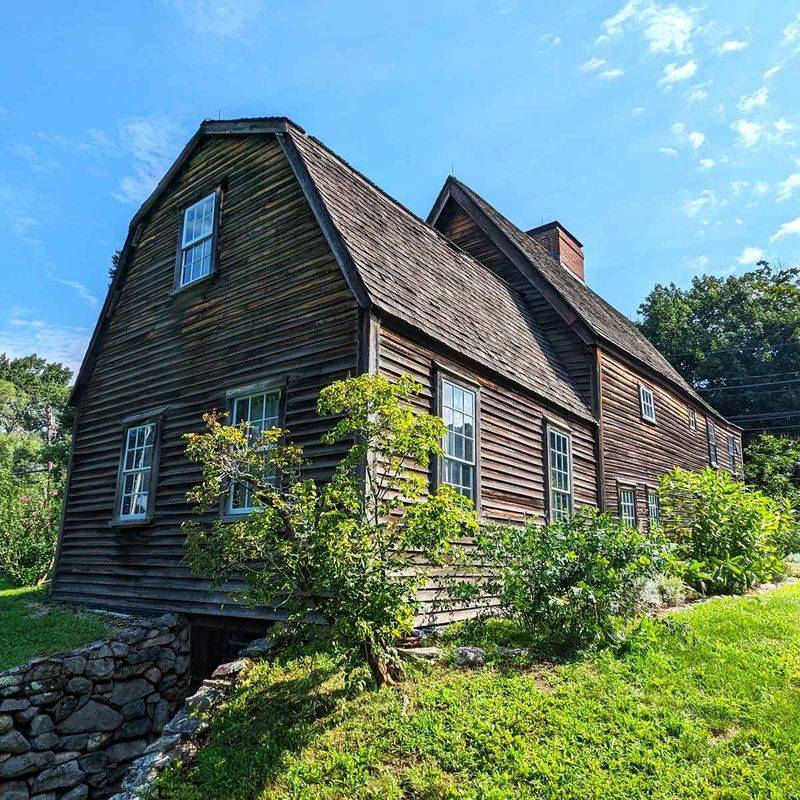
Regarded as the oldest timber-frame house in North America, the Fairbanks House in Dedham, Massachusetts, transports visitors back to the 17th century. Its clapboard siding and gable roof are hallmarks of colonial architecture.
Constructed around 1637 by Jonathan Fairbanks, the house has remained in the family for eight generations. Each room is a portal to the past, offering a glimpse into colonial life.
The Fairbanks House is a testament to the craftsmanship and perseverance of its builders, and stands today as a charming relic of America’s early architectural heritage.
Paul Revere House
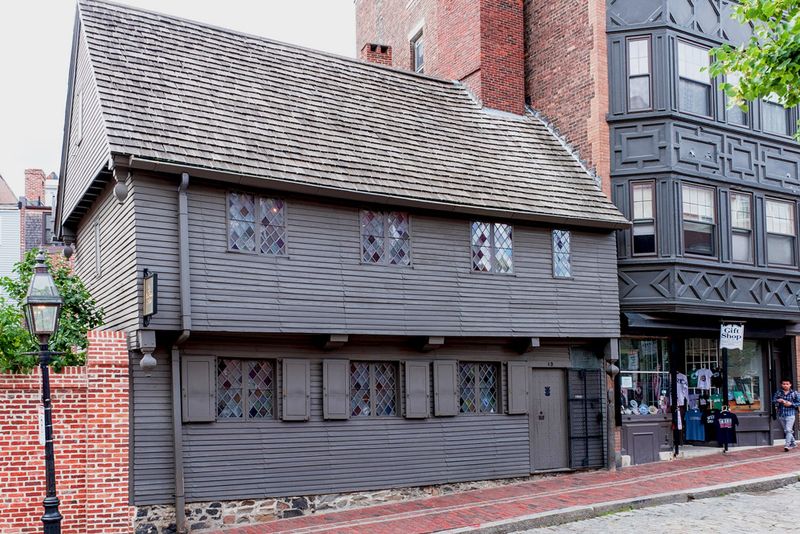
Step into history at the Paul Revere House, a cherished colonial landmark in Boston. Built in 1680, its wooden clapboard and steep gables evoke the city’s storied past.
This modest home served as the residence of the famous patriot Paul Revere, who made his legendary midnight ride in 1775. Visitors can explore the carefully preserved rooms, filled with artifacts that capture the spirit of the Revolutionary era.
Located on a charming cobblestone street, the Paul Revere House offers a unique glimpse into the life of one of America’s iconic figures, inviting exploration and reflection.
The Old Ship Church
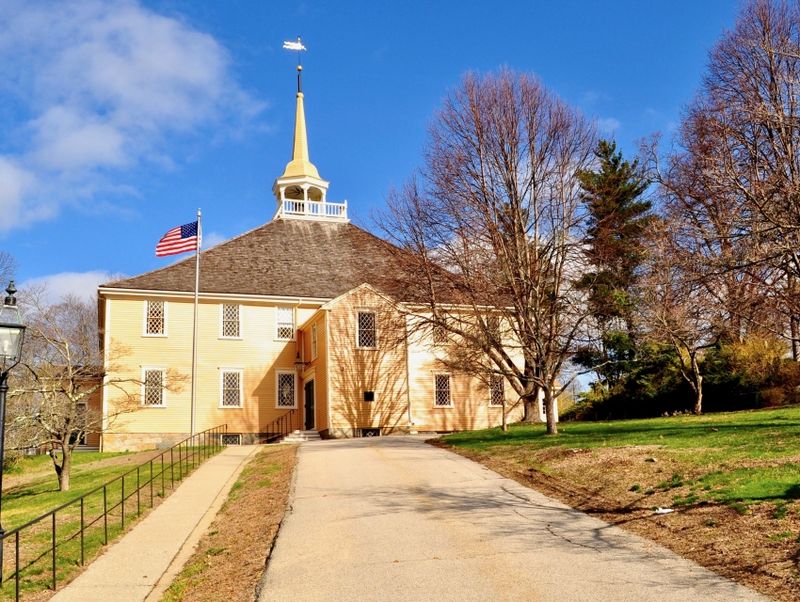
The Old Ship Church in Hingham, Massachusetts, holds the distinction of being the oldest church in continuous use in the United States. Built in 1681, its wooden structure resembles the hull of a ship, a nod to its maritime roots.
Inside, the church is a testament to the craftsmanship of its builders, with timber beams and box pews that transport visitors to colonial times.
Today, the church remains a vibrant center of community life, hosting services and events that echo its storied past. The Old Ship Church stands as a living testament to faith and tradition.
Touro Synagogue
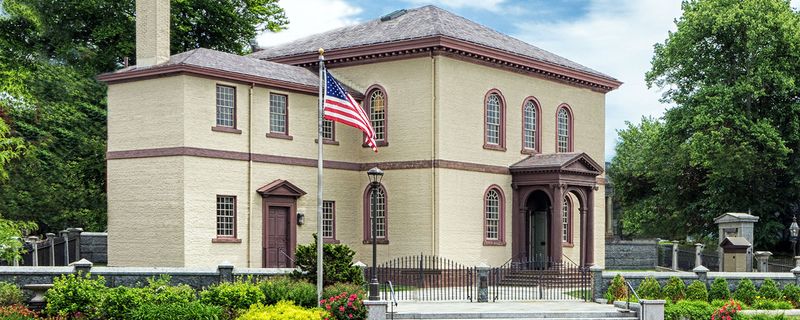
Nestled in Newport, Rhode Island, the Touro Synagogue is a beacon of religious freedom and architectural elegance. Constructed in 1763, it is the oldest synagogue in the United States.
Its Neoclassical design, featuring white columns and a graceful façade, reflects the aspirations of its early congregants. Inside, the sanctuary is filled with light, creating an atmosphere of serene reverence.
The synagogue stands as a symbol of the diversity and tolerance that define America, offering a profound connection to the nation’s foundational values. Visitors leave with a sense of inspiration and historical insight.
Fort Snelling
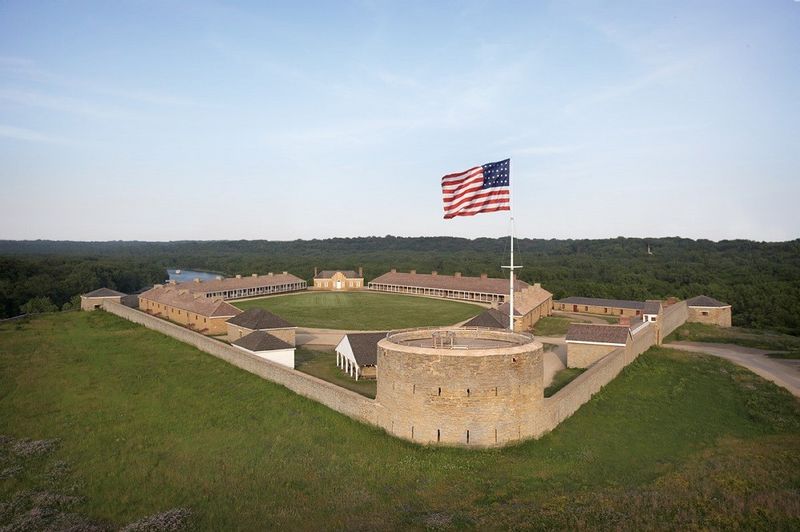
Overlooking the confluence of the Mississippi and Minnesota Rivers, Fort Snelling stands as a sentinel of American military history. Established in 1819, its stone fortifications offer a glimpse into the early frontier days.
Visitors can explore the fort’s barracks, watchtowers, and parade grounds, where reenactments bring the past to life. The fort’s strategic location made it a key military outpost during its time.
Today, Fort Snelling serves as a museum and historic site, preserving the stories of soldiers and settlers who shaped the region’s history. It’s a place of remembrance and discovery.
St. Luke’s Church
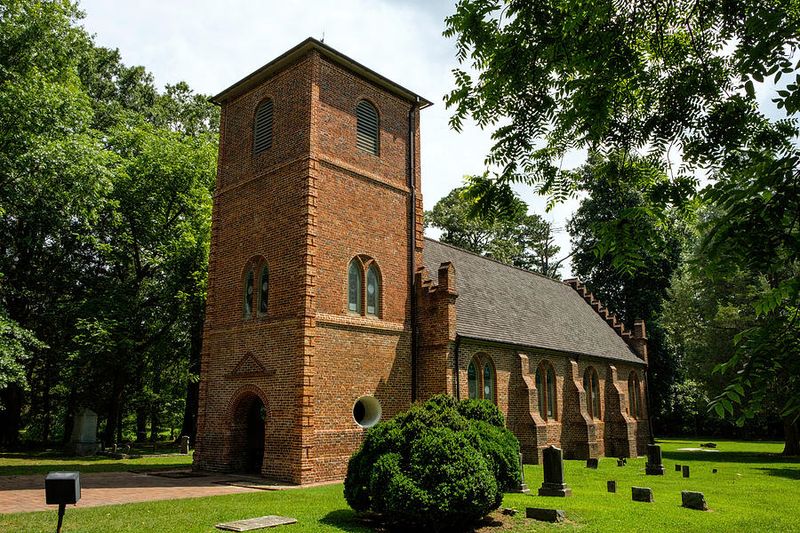
In the quaint town of Smithfield, Virginia, St. Luke’s Church stands as a testament to the enduring power of faith and community. Built in 1682, it is the oldest surviving Gothic-style church in the country.
The church’s red brick walls and pointed arches exude a timeless elegance, inviting visitors to explore its hallowed halls. Inside, the serene atmosphere and beautifully crafted woodwork inspire reflection.
Surrounded by verdant grounds, St. Luke’s offers a peaceful retreat from the hustle and bustle of modern life, providing a window into the spiritual lives of early Americans.
Clover Hill Tavern
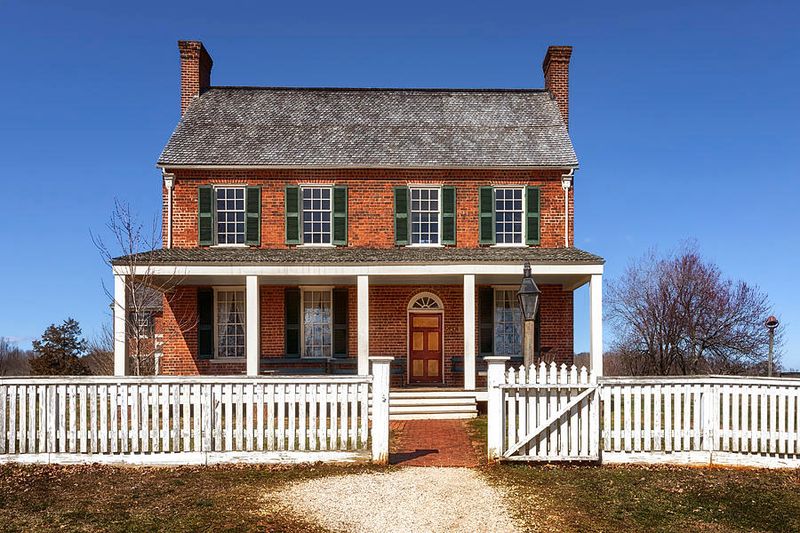
The Clover Hill Tavern in Appomattox, Virginia, is a rustic reminder of America’s Civil War past. Built in the early 1800s, its log structure harks back to simpler times.
This historic site gained prominence when it served as the location for the printing of the paroles for Confederate soldiers following General Lee’s surrender in 1865. Visitors can step back in time as they explore the tavern’s rooms and furnishings.
The Clover Hill Tavern is more than just a building; it’s a symbol of reconciliation and the complexities of America’s journey toward unity and peace.
Old Stone House
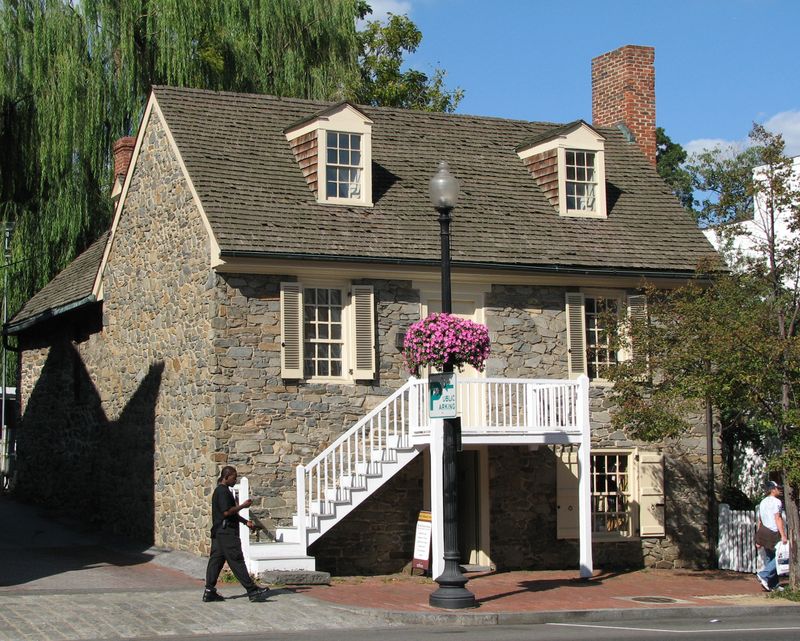
Located in the heart of Georgetown, Washington, D.C., the Old Stone House is a charming relic of the 18th century. Built in 1765, it is the oldest unchanged building in the capital.
Its simple stone façade and quaint gardens evoke a sense of nostalgia, inviting visitors to imagine life in colonial America. Inside, the house is filled with period furnishings and exhibits that tell the story of its past inhabitants.
The Old Stone House offers a quiet escape from the bustling city, providing a glimpse into the lives of those who once called it home. It’s a hidden gem of history.
Fort Necessity
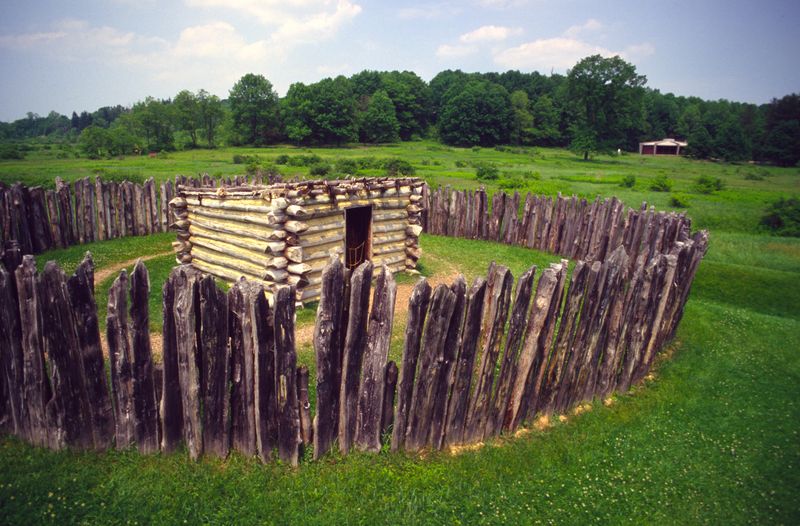
Tucked away in the rolling hills of Pennsylvania, Fort Necessity is a site of historical significance and natural beauty. Built in 1754, it was the scene of an early battle in the French and Indian War.
Visitors can explore the reconstructed wooden palisades and learn about the young George Washington’s role in the conflict. The fort’s peaceful surroundings belie its tumultuous past.
Today, Fort Necessity is a place of education and reflection, offering visitors a deeper understanding of the complexities of early American history and the challenges faced by its pioneers.
The Henry Whitfield House
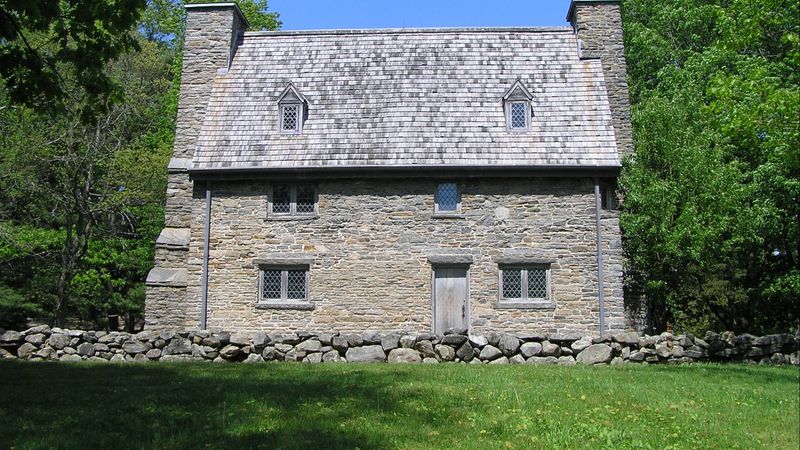
The Henry Whitfield House in Guilford, Connecticut, is a fascinating glimpse into the 17th century. Built in 1639, this stone structure is the oldest surviving house in the state.
Its thick stone walls and gabled roof speak to a time of early colonial settlement and resilience. Inside, museum exhibits and period furnishings transport visitors to a bygone era.
The house’s rich history and well-preserved architecture make it a must-see for history enthusiasts. The Henry Whitfield House offers a unique window into the lives of New England’s early settlers.
The John Paul Jones House
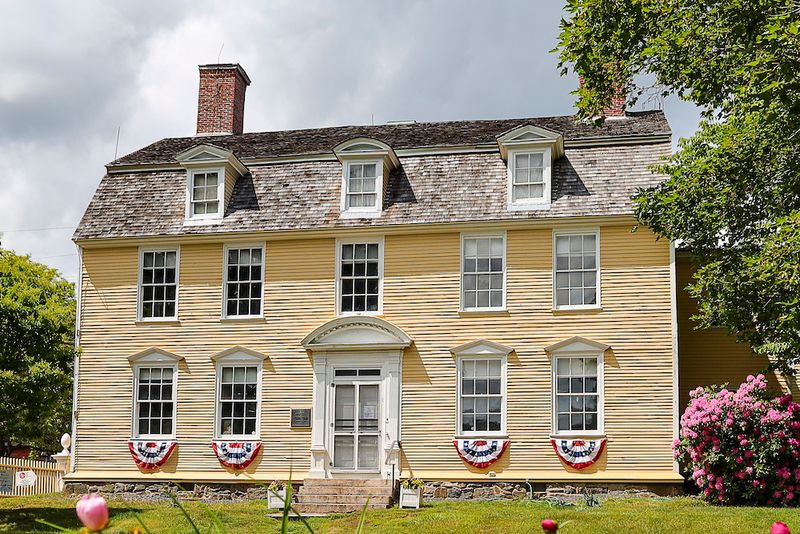
Step into maritime history at the John Paul Jones House in Portsmouth, New Hampshire. Built in 1758, this Georgian-style house was once home to the famous naval hero.
Inside, visitors can explore exhibits dedicated to Jones’s adventurous life and the era’s naval history. The house’s elegant architecture and period furnishings offer a glimpse into 18th-century living.
Located in a charming New England town, the John Paul Jones House invites exploration and discovery, celebrating the spirit of a man who helped shape America’s naval legacy. It’s a captivating journey into the past.
The Wyckoff Farmhouse
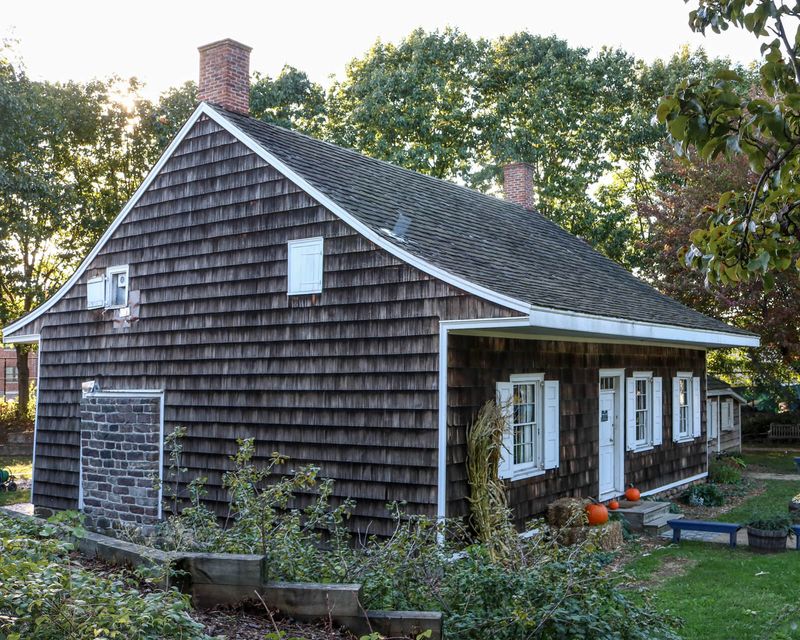
In the bustling borough of Brooklyn, New York, the Wyckoff Farmhouse stands as a testament to the city’s colonial roots. Built in 1652, it is the oldest surviving building in New York City.
Its Dutch Colonial architecture, with its steep roof and shingled exterior, offers a glimpse into the lives of early settlers. Visitors can explore the farmhouse’s interior, where history comes alive through exhibits and interactive programs.
The Wyckoff Farmhouse is a cherished piece of New York’s history, offering a peaceful retreat amid the urban landscape and a window into the city’s diverse past.
The Old Dutch Church
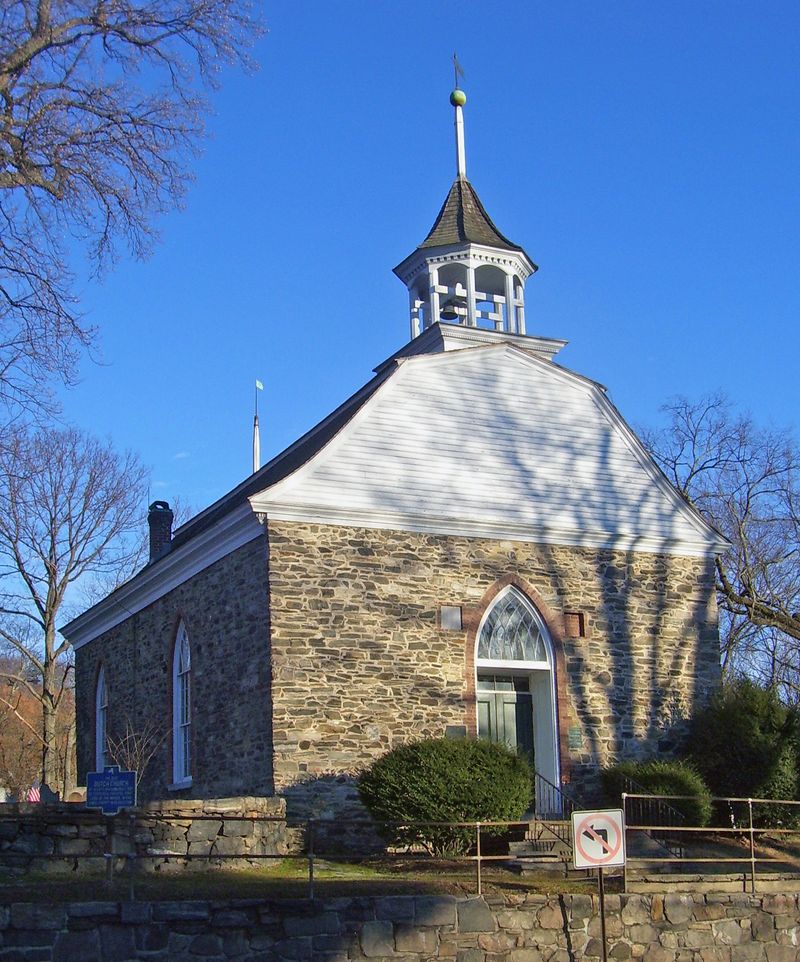
In the storied village of Sleepy Hollow, New York, the Old Dutch Church stands as a timeless symbol of faith and history. Built in 1685, its stone façade and simple elegance evoke a sense of reverence.
This historic church is famously linked to Washington Irving’s “The Legend of Sleepy Hollow,” adding an air of mystery and intrigue. Visitors can wander the church’s grounds, where ancient gravestones whisper tales of the past.
The Old Dutch Church offers a connection to both literary and colonial history, inviting reflection and exploration of its storied surroundings.
The House of the Seven Gables
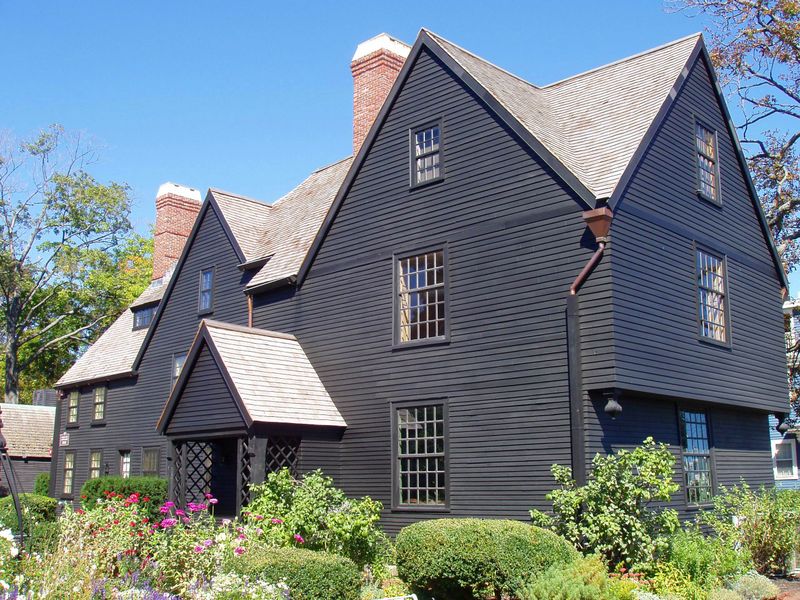
The House of the Seven Gables in Salem, Massachusetts, is a fascinating blend of history and literature. Built in 1668, this iconic structure inspired Nathaniel Hawthorne’s famous novel.
Visitors can explore its gabled roof and hidden passageways, immersing themselves in the world of colonial America. The house’s rich history and connection to Hawthorne offer a unique cultural experience.
Located in the historic town of Salem, the House of the Seven Gables is a must-visit for literary enthusiasts and history buffs alike, providing a captivating journey through time.
The Old Courthouse
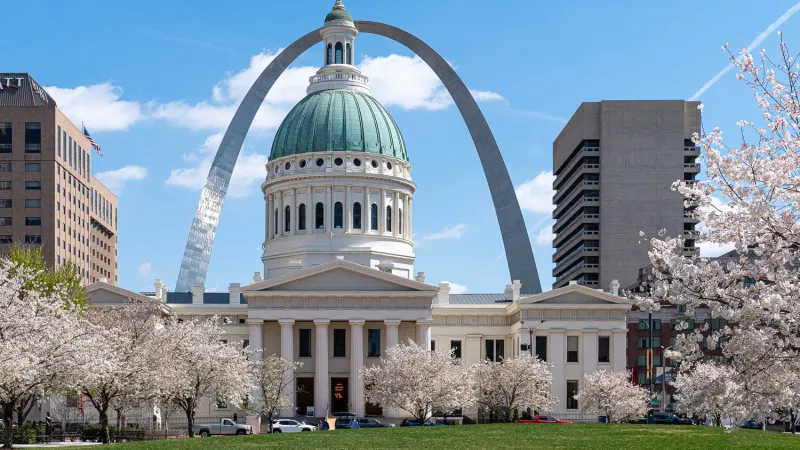
The Old Courthouse in St. Louis, Missouri, is a striking example of 19th-century architecture and legal history. Built between 1839 and 1862, its red brick façade and grand dome are iconic features.
Visitors can explore the courthouse’s historic courtrooms, where pivotal cases like the Dred Scott decision unfolded. The structure’s elegant design and historical significance make it a captivating destination.
Located in the heart of St. Louis, the Old Courthouse offers a unique window into America’s legal past, inviting visitors to reflect on the nation’s journey toward justice and equality.
The Governor’s Palace
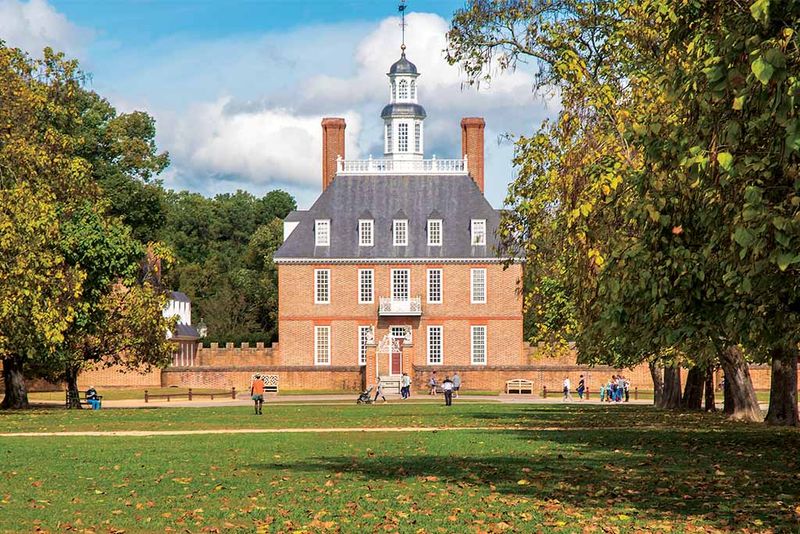
Step back in time at The Governor’s Palace in Williamsburg, Virginia. This grand colonial mansion served as the residence for the Royal Governors of the Virginia Colony.
Built in the early 18th century, its stately architecture and lush gardens offer a glimpse into the opulent lifestyle of colonial elites. Visitors can explore the palace’s richly furnished rooms and grand hallways.
The Governor’s Palace is a highlight of Colonial Williamsburg, a living history museum that transports visitors to the 18th century, celebrating the traditions and culture of early America.
Fort Mackinac
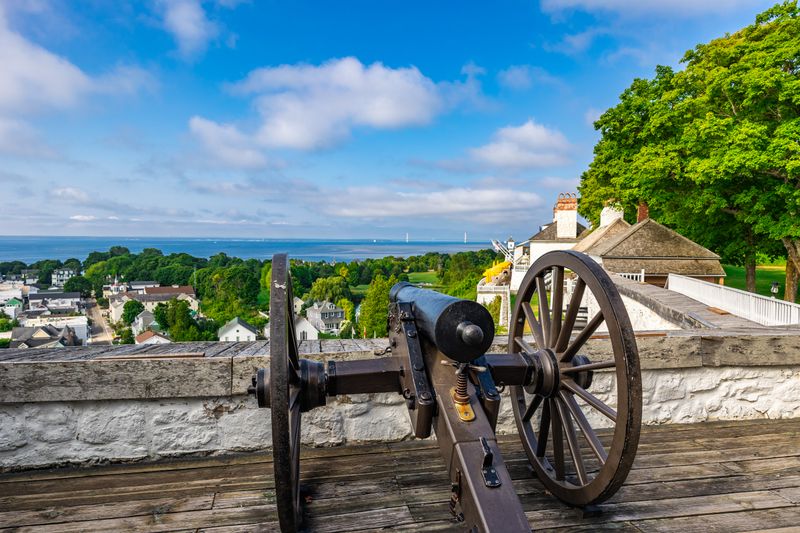
Perched on the scenic bluffs of Mackinac Island, Michigan, Fort Mackinac offers a panoramic view of the Great Lakes. Established in 1780, its stone walls and strategic location made it a vital military post.
Visitors can explore the fort’s well-preserved buildings and enjoy reenactments that bring history to life. From its ramparts, the view is as breathtaking as the stories of valor and conflict that shaped its past.
Fort Mackinac is a gateway to the region’s rich history, offering a unique blend of natural beauty and historical insight, making it a must-visit destination.
